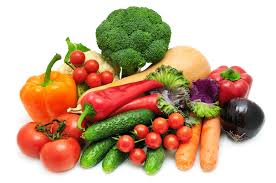We all know that vegetables are good for us. They contain fibre, vitamins, minerals, antioxidants and phytonutrients that have beneficial effects on our health. People who eat lots of vegetables tend to have a lower risk of many diseases including obesity, cancer and cardiovascular disease. Ideally, we should be consuming at least 5-7 portions of different vegetables a day, but many of us struggle to consume 2 or 3! Children in particular can be fussy about vegetables, understandably preferring sweeter vegetables such as peas, carrot and sweetcorn to the more bitter tastes of spinach, Brussel sprouts or cauliflower. But by eating the same vegetables day after day, it is more likely that we’ll be missing out on the valuable health benefits of a wider range of vegetables. Here are some ways to sneak more vegetables into your daily diet:
1) Grate vegetables into soups, sauces and curries. Try grating some courgette and carrot into a Bolognese or chilli towards the end of cooking. They will add a natural sweetness to the sauce but you won’t notice them there!
2) Eat vegetables for breakfast. Veggies are a great addition to an omelette or traditional cooked breakfast. Try sautéed mushrooms and spinach, grilled tomatoes, or a sweet potato rosti. Leftover vegetables from dinner the night before can be sautéed in a pan and topped with a poached egg.
3) Swap traditional chips for some vegetable wedges. Root vegetables such as sweet potato, swede or parsnip make great wedges. Cut into wedge shapes, toss in a little oil, put on a baking tray and bake in a hot oven for 20-25 minutes. You can add flavourings such as smoked paprika, thyme, garlic powder or sea salt if you like.
4) Ditch the bread and get creative! Instead of wraps, try a large lettuce or cabbage leaf to contain your sandwich filling. Serve a beefburger on a Portobello mushroom that has been baked with a little garlic and a knob of butter, instead of the usual bread roll. Sweet potato toast is the newest foodie’s favourite – slice a sweet potato lengthways into ½ inch thick pieces, and pop in the toaster or under the grill. Serve topped with nut butter and banana, sardines or scrambled eggs.
5) Drink your vegetables! If you have a juicer, juice one or two vegetables with once piece of fruit for a healthy combination that won’t send your blood sugar rocketing. Try beetroot, celery and apple or carrot, orange and cucumber. Or add vegetables to smoothies – baby spinach has a mild flavour that you won’t notice, whilst avocado added to a smoothie makes a really creamy texture and is especially good in chocolate smoothies!
6) Add to home baking. We’ve all heard of carrot cake but there are other varieties of vegetables which make delicious, moist cakes too. Try red velvet cake (beetroot and chocolate), courgette or parsnip cake.
7) Serve steamed vegetables with a generous drizzle of olive oil or knob of butter and some fresh herbs. This not only makes them taste better, but increases the availability of fat-soluble nutrients such as beta-carotene, which can’t be absorbed without fat!
8) When you need a snack, reach for cherry tomatoes, celery, or sweet pepper strips. Many supermarkets carry small packages of carrot sticks or mini cucumbers in their produce sections. They make good lunch box (or briefcase) snacks for kids of all ages. If you don’t like them plain, try dipping them in hummus, guacamole or salsa.
9) If you must resort to the occasional ready meal, boost the nutritional content by adding in extra veg. For example, throw a handful of baby spinach into a curry or add some extra mushrooms and sliced peppers to a pizza, and serve with a side salad.
10) Swap a packet of crisps for some homemade vegetable crisps. Try curly kale, torn into pieces and tossed with a little olive or coconut oil. Bake in a moderate oven for about 10 minutes until crispy, and sprinkle with sea salt. Or slice sweet potato or beetroot into thin rounds and bake until crisp. You can also use your vegetable peelings in this way – carrot and parsnip are great – the possibilities are endless!

